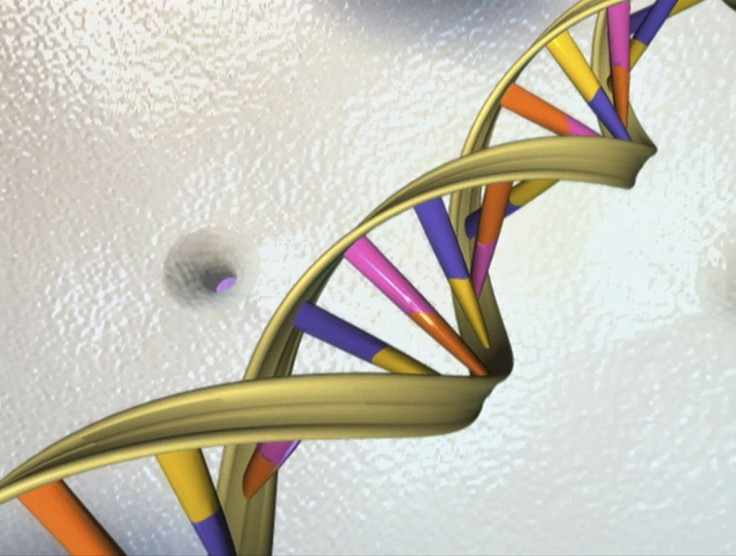DNA Makes Up Only Half Of Every Human Chromosome, Study Reveals

A human being has an estimated 25,000 genes, encoded in molecules of deoxyribonucleic acid (DNA). These molecules, which form a double helix, are present in structures known as chromosomes — most of which are located inside cellular nuclei — as part of a complex of DNA and proteins.
However, a new study has revealed that chromosomes are not composed entirely of this complex of macromolecules known as chromatin. The study, published in the latest edition of the journal Molecular Cell, shows that up to 47 percent of every human chromosome is composed of a mysterious sheath-like structure that surrounds the genetic material, with chromatin making up a “surprisingly” small percentage of the chromosomes’ mass.
Although the function of this sheath is not yet known, the researchers believe it may play a key role in keeping chromosomes isolated from one another during cell division, thereby reducing coding errors that can lead to birth defects. This hypothesis is supported by the fact that this so-called chromosome periphery is formed only in the presence of a protein known as Ki-67, which is associated with cellular proliferation.
“We now have to re-think how chromosomes are built and how they segregate when cells divide, since the genetic material is covered by this thick layer of other material,” study co-author William Earnshaw from the University of Edinburgh’s school of biological sciences said in a statement.
In order to view the internal structure of chromosomes with unprecedented clarity and to create high-resolution 3D images of chromosomes, the researchers developed a highly-precise microscopy technique called 3D-CLEM, which combines light and electron microscopy with modelling software.
“The imaging technique we have developed to study chromosomes is truly groundbreaking,” study lead author Daniel Booth, also from the University of Edinburgh, said in the statement. “Defining the structure of all 46 human chromosomes for the first time has forced us to reconsider the idea that they are composed almost exclusively of chromatin, an assumption that has gone largely unchallenged for almost 100 years.”
© Copyright IBTimes 2024. All rights reserved.





















